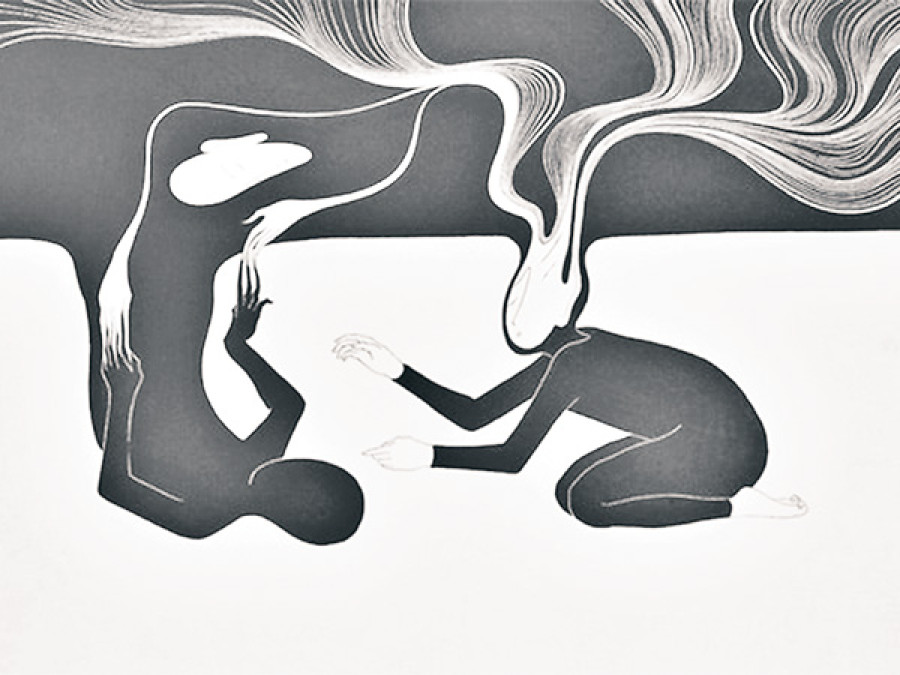Opinion
Time and trauma
Earthquake survivors who maintain and strengthen social bonds are less likely to develop PTSD
Dr Brandon Kohrt
One month has passed since an earthquake killed almost 9,000 people in Nepal. I’ve spent much of the past 20 years working there and, as a psychiatrist, view one month as having special meaning. From a clinical standpoint, it’s the amount of time that must pass before a patient can qualify for a diagnosis of post-traumatic stress disorder (PTSD).
Many of Nepal’s earthquake survivors are dealing with nightmares, poor concentration, and other classic PTSD symptoms. However, it would be a serious mistake to now start labeling them with the disorder.
To be sure, they still need food, shelter and other emergency relief. The tragic crash of a US military helicopter reminded everyone in the United States how urgent and challenging this need remains. Simultaneously, many of the earthquake survivors need psychological support—but in a way that makes sense for Nepal.
Making sense of things
In my own country, mental health professionals who treat survivors of disasters such as the recent Amtrak crash in Philadelphia or tornadoes in the Midwest can draw on well-established techniques to help victims process their feelings and move forward with their lives. ‘Trauma-focused cognitive behaviour therapy’ has proven effective with both children and adults and is typically administered by a mental health professional with special training.
By contrast, people living in the rubble of Himalayan villages are lucky to see a medical professional of any kind, much less one trained in mental health. Nepal has fewer than two psychiatrists per million people and even fewer psychologists. Twenty minutes after the 7.3 magnitude aftershock on May 12th, I spoke with my long-time colleague, Suraj Koirala, who heads one of the few organisations providing mental health services. “We are all okay physically,” he told me, “but I am not sure about mentally.”
Fortunately, Nepal has an excellent resource to provide ‘psychological first aid’ to earthquake survivors quickly and at a reasonable cost. These are local people who were trained to assist victims of the armed conflict between Nepal’s government and Maoist rebels. Although lacking formal medical credentials, they learned to help torture survivors and child soldiers with psychological distress who were living in physical and emotional isolation.
Suraj and I spent many years working with them. For instance, we trained Maya Shrestha, a young community worker in southern Nepal who learned techniques for strengthening social support among survivors of political violence. Maya was initially the only help for Asha, a 16-year-old former child solider who attempted suicide after being abandoned by her mother and husband. Maya provided Asha with basic counseling and helped her and other traumatised youth reconnect with their families and communities. Thanks to Maya and hundreds of others like her, many of Nepal’s child soldiers recovered measurably from their ordeals, even without specialised psychiatric services.
Maya and the others should now be recruited to apply their skills to Nepal’s latest crisis. They will need to learn new techniques to deal specifically with earthquake survivors, but they have already proven their effectiveness in helping their fellow citizens make sense of traumatic events. They know the people, they know the language, and they can get to work quickly.
Avoid labels
What Nepal should definitely not do is start labeling its earthquake survivors as PTSD victims. When I began researching psychological trauma in Nepal, I saw trauma treatment programmes where no one showed up for services. I learned that PTSD was translated as ‘brain shock’ and carried a stigma comparable to schizophrenia. Survivors of trauma did not seek care because of the shame it brought to them and their families. What those survivors needed was social support from people who really understood their situation, who knew that trauma survivors who maintain or strengthen social bonds are less likely to develop PTSD.
One month after its initial earthquake, Nepal and everyone joining in its earthquake relief effort face a long challenge. Even as they continue providing shelter and food, they must address the profound mental health needs of people who saw loved ones die and houses crumble. Nepal should embrace the irony that its civil war led to the training of a cadre of compassionate people like Maya Shrestha. It needs to get them get off the sidelines and into the field.
Dr Kohrt is a psychiatrist and medical anthropologist in the Duke Global Health Institute and the Department of Psychiatry and Behavioral Sciences at Duke University in the United States. He studies populations affected by war and other traumas.




 7.12°C Kathmandu
7.12°C Kathmandu










